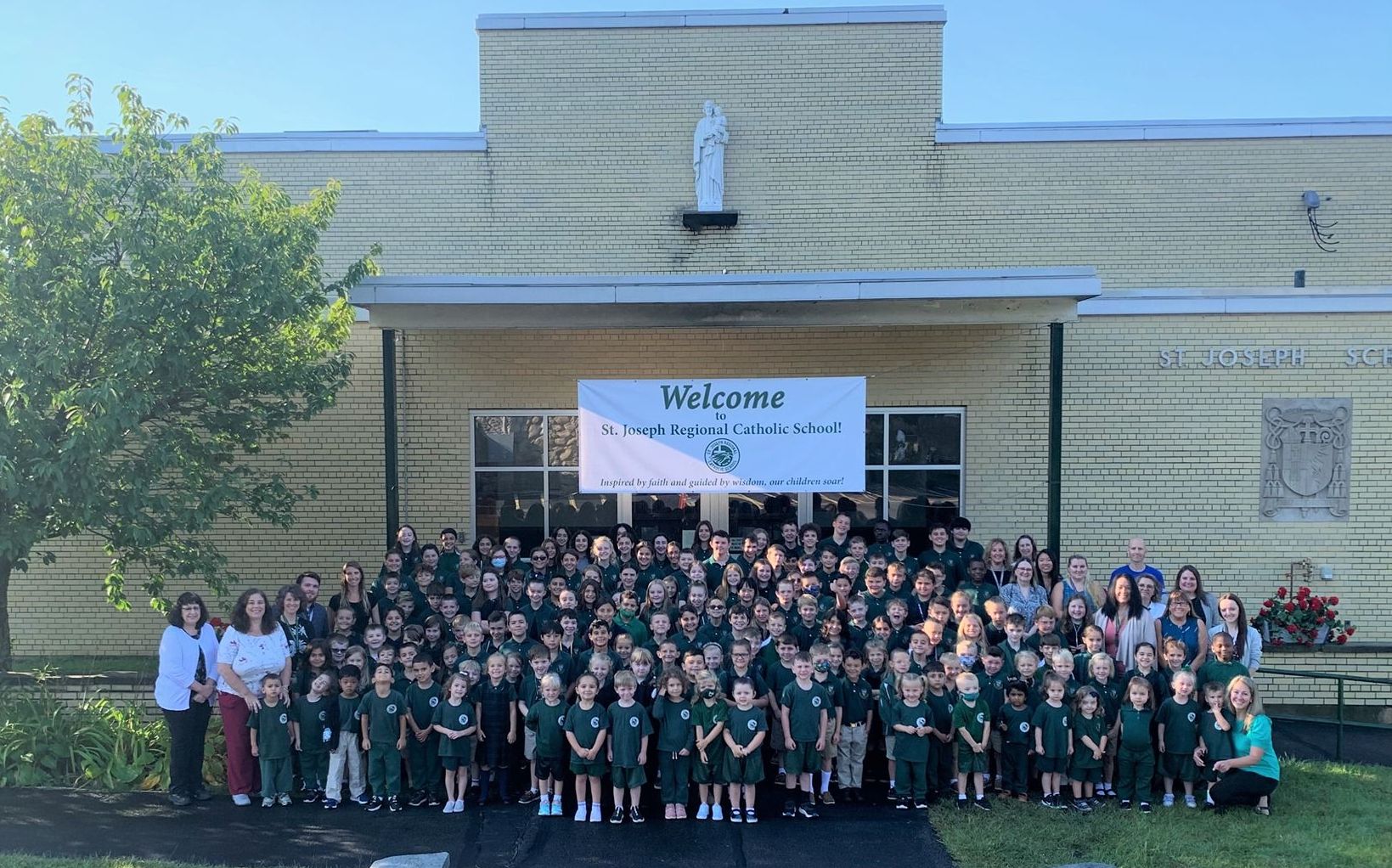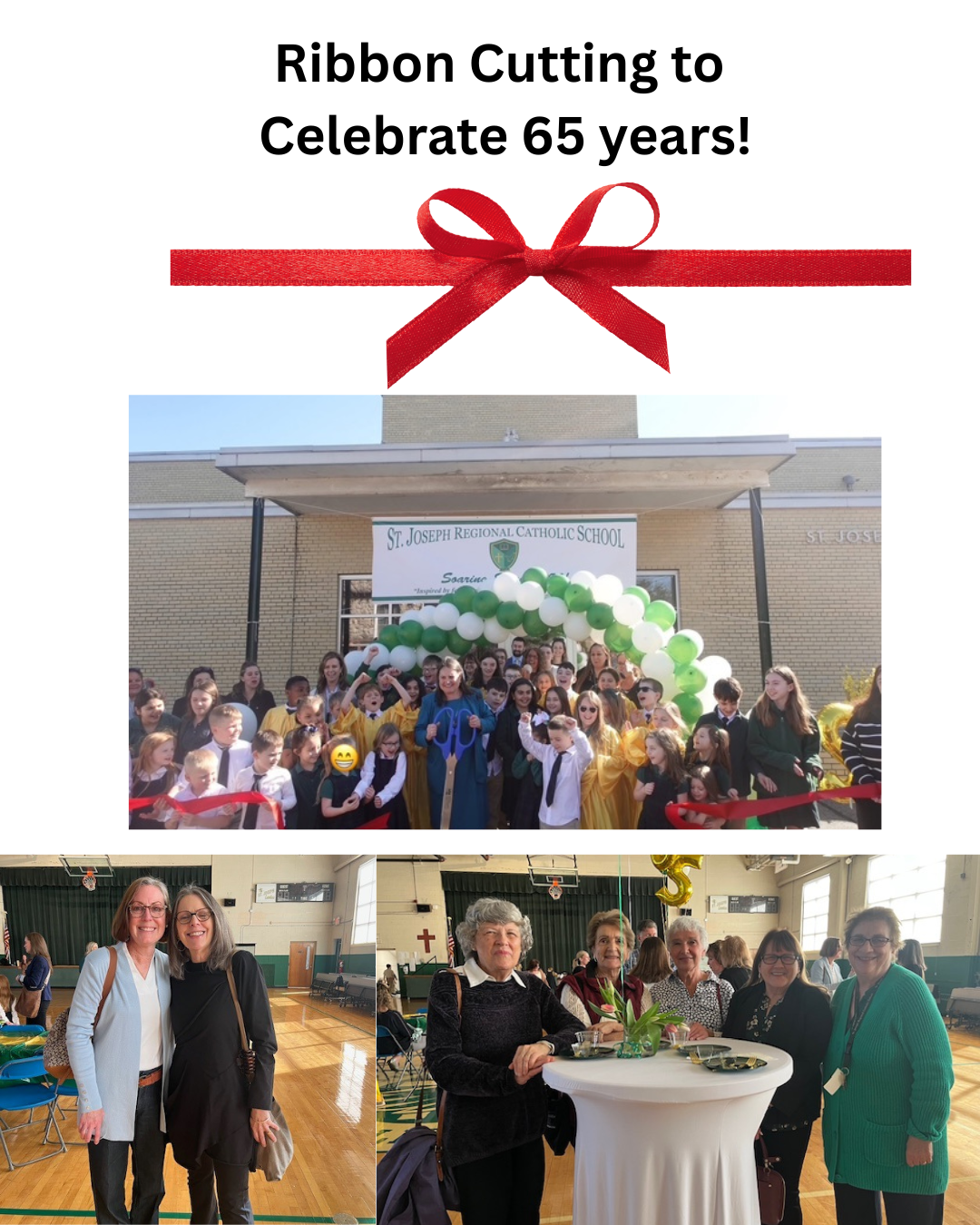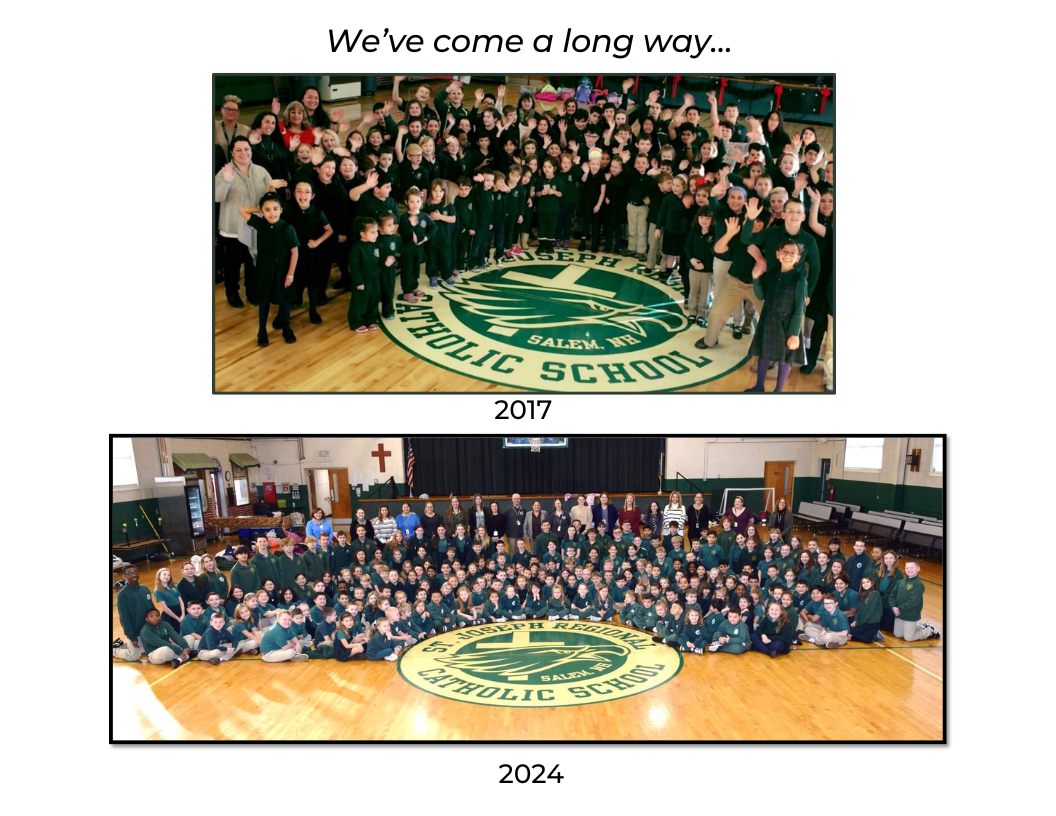 As the population of Salem, New Hampshire grew rapidly in the late 1950s, Msgr. Cornelius Cahill, who became pastor of St. Joseph Church in 1957, recognized the need for a parochial school to educate the children of the parish. Construction began in November 1958 and the first students were welcomed the following September by two nuns belonging to the Sisters of Notre Dame de Namur. The newly-constructed school building included the auditorium, eight classrooms on the main floor, and an unfinished lower level. Only two of the classrooms were used initially for grades one and two, but the plan was to open a new grade each year. This happened much sooner than expected, and by 1963, one class for each of the eight grades had been filled.
As the population of Salem, New Hampshire grew rapidly in the late 1950s, Msgr. Cornelius Cahill, who became pastor of St. Joseph Church in 1957, recognized the need for a parochial school to educate the children of the parish. Construction began in November 1958 and the first students were welcomed the following September by two nuns belonging to the Sisters of Notre Dame de Namur. The newly-constructed school building included the auditorium, eight classrooms on the main floor, and an unfinished lower level. Only two of the classrooms were used initially for grades one and two, but the plan was to open a new grade each year. This happened much sooner than expected, and by 1963, one class for each of the eight grades had been filled.
During St. Joseph’s School’s early years, the Salem School District was in urgent need of space because rapid population growth had led to overcrowded public schools. St. Joseph School, meanwhile, had an entire unoccupied floor. The district’s school administrators proposed to Father Cahill that the town of Salem build and furnish classrooms in the lower level of the school, in exchange for the opportunity to rent this space from the parish to be used as classrooms for public school children. After two years of renting out these eight additional classrooms, St. Joseph School, which had experienced an unanticipated growth in enrollment, reclaimed this space to accommodate a second class of each grade.
When the school first opened its doors, the nuns who taught there lived at St. Monica’s convent in Methuen, and each day parents would drive them back and forth to school. To give these dedicated teachers a more convenient home, a third floor was added to the school building to serve as a permanent convent. It turned out that the living quarters that were constructed provided much more space than would ever be needed for the nuns. Due to a nationwide decline in religious orders that began in the 1960s, it became necessary to hire the first lay teacher in 1964, and an additional lay person almost every year thereafter. When the school was almost completely run by the laity, the third floor was reconfigured to increase classroom space and eventually provide room for a library, music room, offices, and, most recently, a state-of-the-art technology lab as well as a “virtual field-trip classroom.” A beautiful chapel also remains on the third floor which is still visited by the students for class religious services.
By the mid-1960s, St. Joseph School had earned such a glowing reputation that parents lined up for hours before registration to hold places for their children. Because the school could only accommodate a limited number of students per class, many children were placed on the waiting list. After Father Cahill retired in 1973, Father John Horan became the pastor and soon received a mandate from the diocese requiring the school to regionalize. St. Joseph School thus became St. Joseph Regional Catholic School, supported not only by Sts. Joseph and Mary Parish, but also by Mary, Queen of Peace* in Salem, St. Matthew’s in Windham, St. Luke’s the Evangelist* in Plaistow, and in 2015, St. Patrick’s of Pelham. When St. Anne’s Parish in Hampstead was established in 1979 it also became a supporting parish.
In recent years, St. Joseph’s has expanded its enrollment area to accommodate students from across the border in Massachusetts. The Kindergarten and Pre-school, which had always been run by St. Joseph Parish, rather than the diocese, officially became part of the school in 2011.
In 2020, St. Joseph Regional Catholic School celebrated its 60th anniversary. As students, faculty, and alumni gathered to celebrate this milestone, they reflected on the past while also embracing the opportunities ahead.
In 2025, St. Joseph Regional Catholic School celebrated its 65th anniversary. The Southern NH Chamber of Commerce helped us to celebrate with a ribbon cutting event attended by students, faculty, retired faculty, and alumni who reminisced about the past and looked forward to many more faith filled years.



